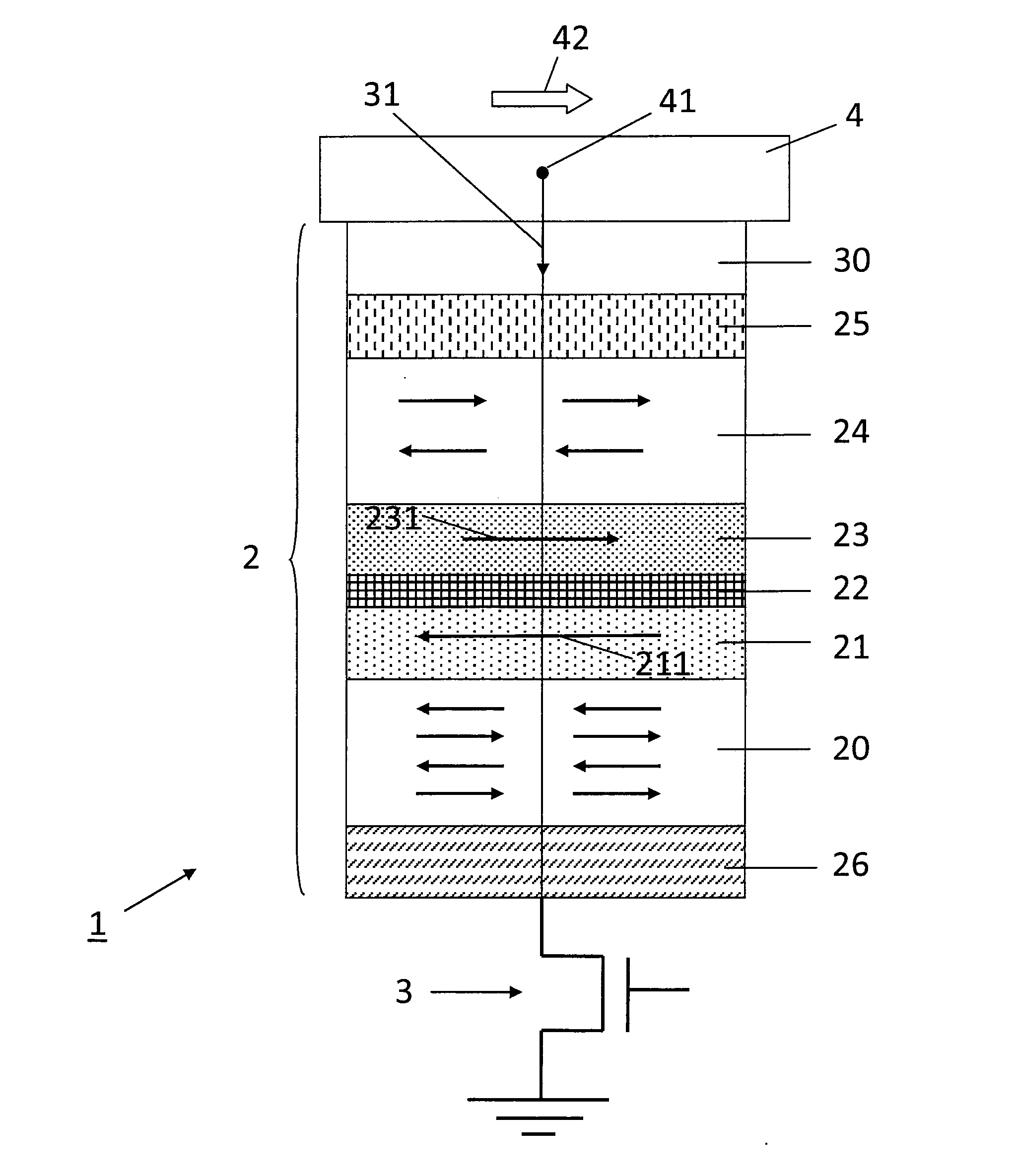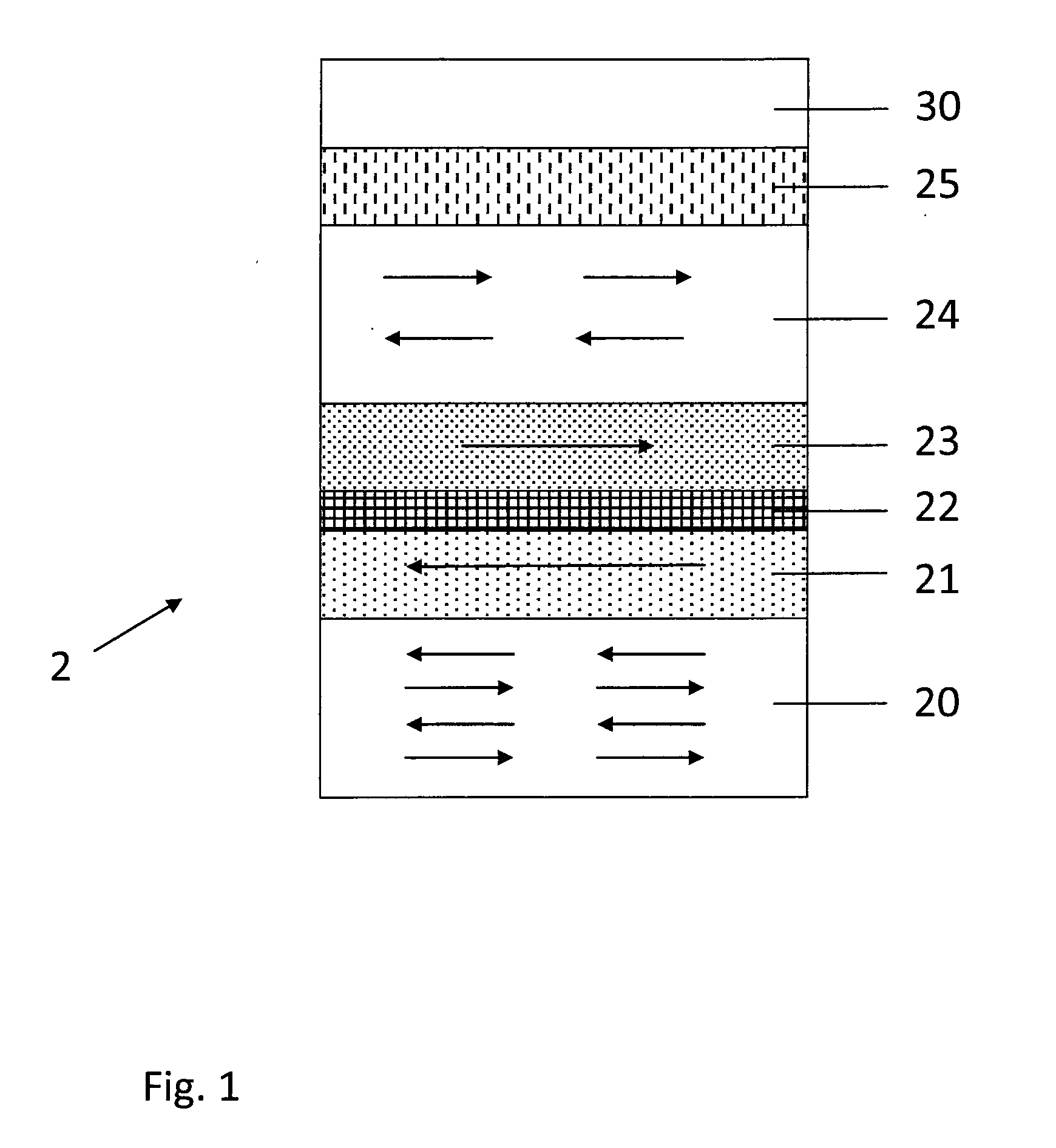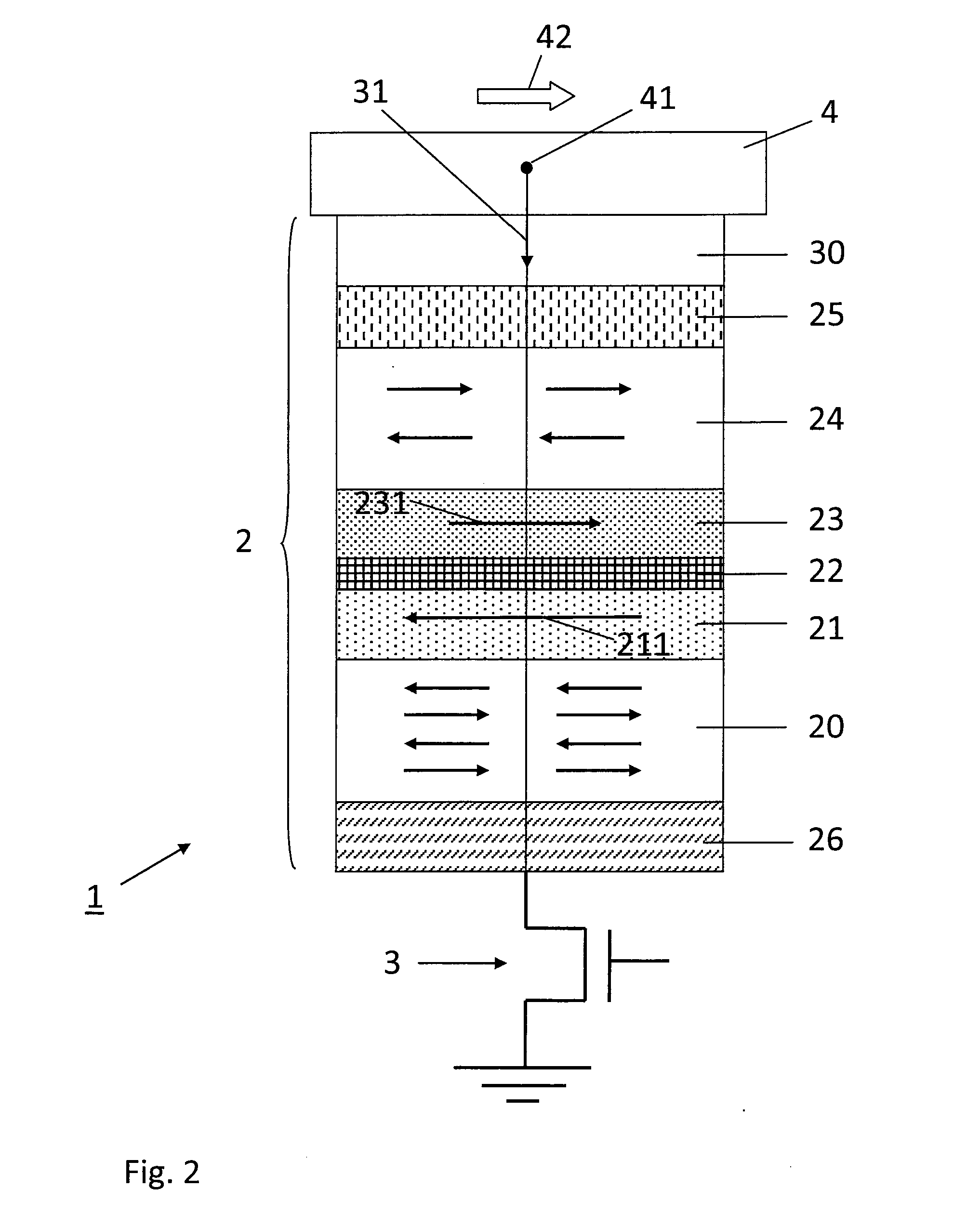Thermally assisted magnetic random access memory element with improved endurance
a memory element and random access technology, applied in the field of magnetic random access memory elements, can solve the problems of limited capacity, limited integration possibility, and inability to guarantee the stability of the free layer magnetization with respect to heat fluctuations, so as to reduce the risk of tunnel barrier breakdown and aging, reduce induced stress, and reduce the effect of aging effects
- Summary
- Abstract
- Description
- Claims
- Application Information
AI Technical Summary
Benefits of technology
Problems solved by technology
Method used
Image
Examples
Embodiment Construction
[0042]FIG. 1 illustrates a magnetic tunnel junction 2 according to an embodiment. The magnetic tunnel junction 2 comprises a first ferromagnetic layer, or reference layer 21, having a fixed magnetization; a second ferromagnetic layer, or storage magnetic layer 23, having a magnetization that can be freely aligned at a predetermined high temperature threshold; and a tunnel barrier 22 provided between the reference layer 21 and the storage layer 23. In the example of FIG. 1, the magnetic tunnel junction 2 comprises an antiferromagnetic storage layer 24, adjacent to the storage layer 23 and pinning the storage layer 23 at a predetermined low temperature threshold. At the predetermined high temperature threshold, the exchange coupling between the antiferromagnetic storage layer 24 and the storage layer 23 is reduced to zero and the magnetization of the storage layer 23 can be freely aligned. The reference layer21 can also be coupled by an antiferromagnetic reference layer 20 pinning its...
PUM
 Login to View More
Login to View More Abstract
Description
Claims
Application Information
 Login to View More
Login to View More - R&D
- Intellectual Property
- Life Sciences
- Materials
- Tech Scout
- Unparalleled Data Quality
- Higher Quality Content
- 60% Fewer Hallucinations
Browse by: Latest US Patents, China's latest patents, Technical Efficacy Thesaurus, Application Domain, Technology Topic, Popular Technical Reports.
© 2025 PatSnap. All rights reserved.Legal|Privacy policy|Modern Slavery Act Transparency Statement|Sitemap|About US| Contact US: help@patsnap.com



